Night Photography: 12 Essential Techniques, with Fuji X cameras
I often discuss with my friends about the tips and tricks in all kind of photography fields. It is good to share your knowledge within a group of photographers. “Let the envy go away and act like a true member of a growing family of photographers”, I say.
Each one has its own vision and original concepts and it is very profitable to share some of the techniques you have, based on your own experiences, which most of them were acquired on a trial and error approach. We often make our own mistakes, even if we were taught about them in the first place. It is good to make mistakes in photography – this is the most powerful way to learn, for good, the correct ways.

As a travel photographer, dealing with situations and places that might never occur again, you have to be prepared to record the relevant moments of your journey. You get driven to quiet places, crowded places, during sunny days or in the shade, even rain. You may be blessed with a beautiful and soft morning light, or the magic blue hour after the sunset, but oftentimes you also get the harsh light of the day – and you have the eternal 2 choices :

The first choice: To wait for the perfect moment, with the perfect light (that might be possible if you don’t travel with your family, kids, if you stay in the same place for several days, when you wait and try several times to shoot in the same locations until you are satisfied, or you simply get lucky and you are in such an ideal moment);

The second choice: To take advantage of the moment that most of the times it would not repeat itself and no matter what kind of light your day might have in that moment, make the best of it and press the shutter button.
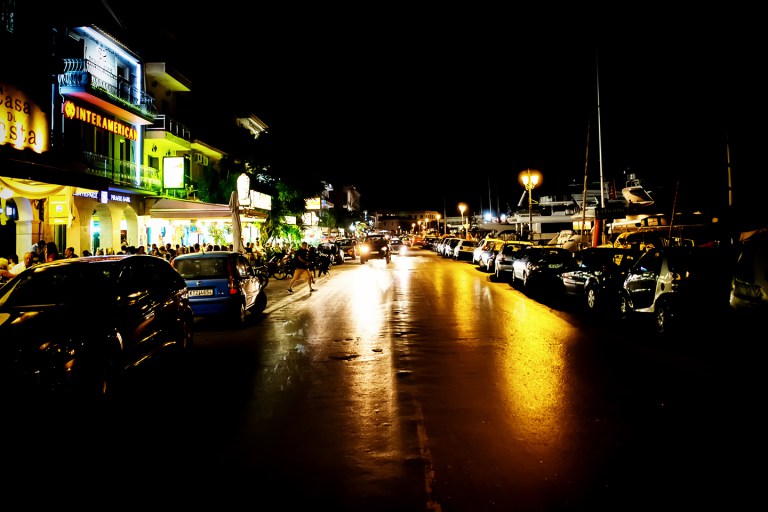
But what about photography during the night? Is it possible to get decent, good, even great result during the night? Yes, it is. And if you are looking for some good results, you have to know that everything related to great night photography will depend on both your skills in this matter and the quality, or the performance/limitations of your photographic equipment.

I will not dedicate this article to Astrophotography. This is a truly magic area of photography and it requires dedicated settings and calculations, special techniques and some very good wide-angle lenses, not to mention a minimum set of post-processing skills. Instead, I will tell you some useful tips for night photography that have their roots in my limited, yet interesting experience as a travel photographer.
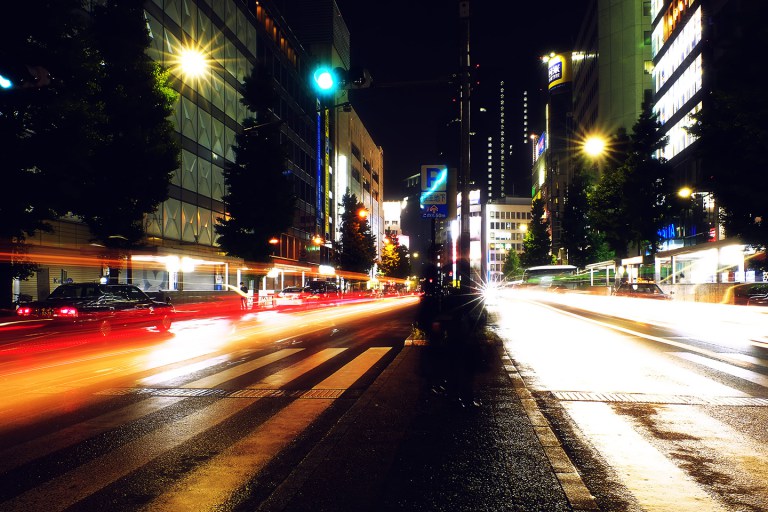
I really love Night Photography and here is why:
The night is magic. You get a different way of the light coming upon objects, people, landscapes, the sky is darker, or pure black, some parts of the reality are hidden and only some of them are visible. This gives a whole new and appealing flavor to the reality to be captured.

It requires some additional skills and I like such a challenge, for a photographer. This is why, not all the people who love photographing can immerse themselves in this photography field and get good results. I know I still have many things to try in this area.

You can get really interesting results, like the light trails in long exposure mode, things that you don’t see during the daylight.

The following tips are described in a simple manner, the way that they come to my mind, so I will not put them in a particular order of importance, They are all important and will lead you to great travel photography during the late evening and night. Different results can be achieved in post processing, using dedicated softwares like Photoshop, Lightroom or Affinity Photo, but what you need to know, for know, is a set of simple techniques to be used on site, when traveling with your camera. This is why I would like to show you a better alternative, than the one when you leave your camera on full Auto Mode and pray to Lord your pictures will turn out to be fantastic. ?

Here are my 12 essential techniques for you, to get the night photographs that you could be proud of:
One. Get a tripod. If you are interested in very sharp images, or long exposure photography, use your lowest ISO settings (ISO 100-200); you will notice that your exposure time in low light conditions will be quite long. So use a sturdy tripod, and hang your bag or backpack on the central column of your tripod, to make it heavier and even more solid, especially when you have a windy night. If you do not travel with a tripod in your backpack, simply put your camera on a steady surface. Make your settings accordingly and when you are ready to shoot, don’t touch the camera. Instead, use a wired (or wireless) remote control shutter release. If you don’t have a remote control, set your shutter timer to 10 seconds, for example. Or use a smartphone App via Wi-Fi, to remotely take control of your camera, as I do with my Fujifilm X-T1. This way, nothing will touch the camera and you will get sharp images.
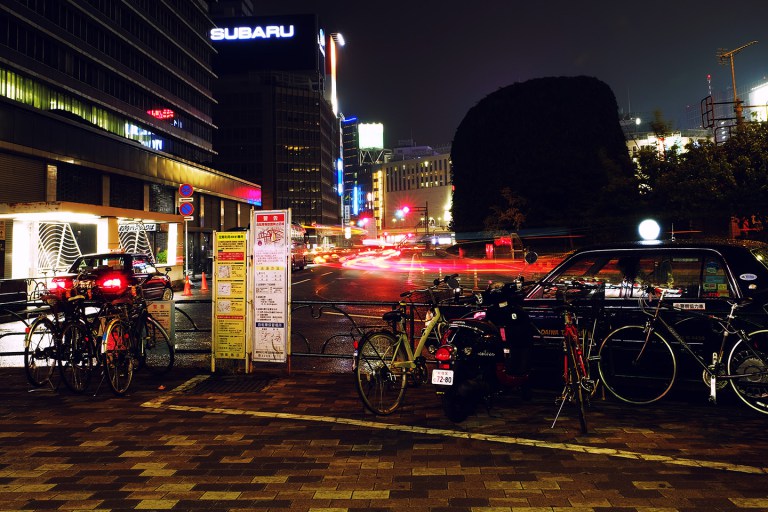
Two. Shoot in Aperture Priority Mode. When you know your camera really well and have the time to prepare all the necessary settings, you may shoot in full Manual Mode. When the time is limited, I prefer to shoot in Aperture Priority Mode. Let the camera calculate the shutter speed and all I have to do is set the aperture and the ISO value, or simply let the ISO for the camera to decide and concentrate only on aperture.

Three. Set you Minimum Shutter Speed according to your focal length of your lens. This rule applies when you hold your camera. For a Full-Frame camera you should set your minimum shutter speed like this : 1/focal length in mm. If you shoot at 24mm, you should mathematically set your shutter speed at 1/24 sec, or 1/30 sec. If you use an APS-C sensor with a 1.5X crop factor, like I do, on my Fujifilm X-T1, then you multiply the focal length value of your lens with 1.5. Shooting at 24mm with an APS-C sensor in your camera will require to set your minimum shutter speed at 1/36 sec, or 1/40 – 1/60 sec to be sure your images will remain sharp, unaffected by the discrete movements of your hands and body. No matter how great is your technique of staying still, you will never be as still as a tripod, when dealing with longer exposure times. Apply this rule, keep your hands as steady as possible and you will be just fine.

Four. Use wide-angle lenses. We all know what they are good for. But shutter speed is related to the focal length of your lens, when shooting hand-held. The shorter the focal length, the bigger the minimal shutter speed value. This means less to zero chances of getting unsharp pictures due to hand movements. With an ultra-wide angle lens, let’s say 12mm focal length, applying the rule above will result in a minimum shutter speed of 1/(12*1.5)=1/18 sec theoretically. And the longer that time value, the lower the ISO in low light conditions. Less image noise, more clarity!
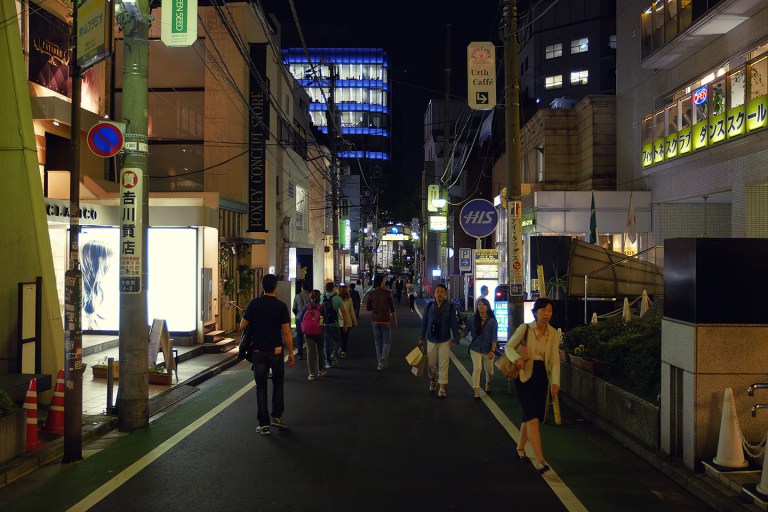
Five. Do not be afraid of raising your ISO values. This rules applies when holding your camera. Between blurry (thus unusable) pictures at low ISO, and sharp pictures at higher ISO, you already know which one of the two situations is preferable. And today, modern processors and noise removal algorithms inside the digital cameras do an excellent job in delivering very useable pictures at incredible high ISO values.

Six. Use fast lenses and shoot at their widest aperture. One of my favorite rule for night photography. Of course, this is firmly related to the available budget for more expensive lenses. By fast lenses, I mean those lenses with a very wide aperture. For me, what is wider/faster than F2.0 is a fast lens. Typically, the zooms are slower than the fixed lenses, due to their construction and technical formula they are based on. A professional zoom lens will have its widest aperture at F2.8, for example (some of them at F2.0 or even F1.8). A good prime lens could have its widest aperture at F1.4. That means 2-stops advantage (of light and speed) over the typical professional zoom. I have 2 prime lenses, that are fast enough for my night photography needs. XF 35mm F1.4 and XF 56mm F1.2. And I am wondering how nice would it be to shoot with a rumored XF 33mm F1.0 lens, that is supposed to arrive in the future to come! I like Fujinon lenses for their robust metal construction, compact size, the manual aperture ring on each lens (just like in the old times with manual focus lenses), their superb optic qualities and the sharpness at their widest aperture. I also use a constant F2.8 pro-grade zoom lens, which is also really good when I travel and do not have the time and opportunity to change the lenses. Shooting at the widest aperture of your lens will ensure that your camera sensor will receive the maximum amount of available light, during the evenings and the nights. A faster lens will offer you lower ISO values and/or shorter exposure times (which means less chances of getting unsharp, blurry pictures), even the opportunity to forget about carrying a tripod.
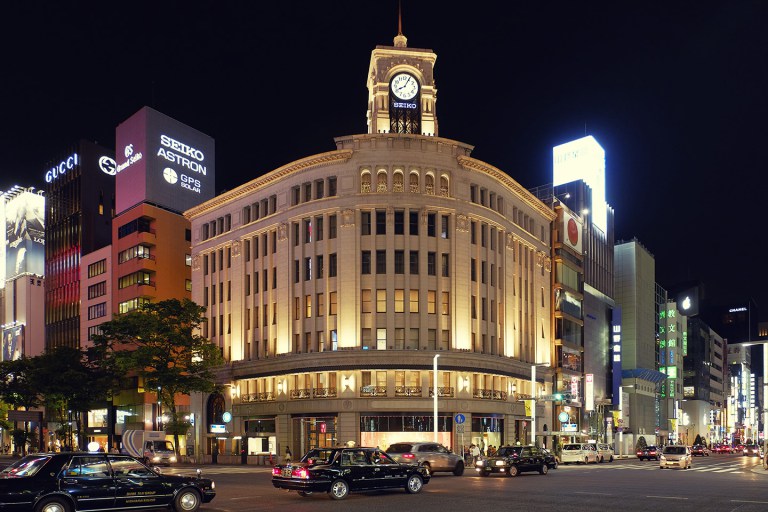
Seven. Use lenses that have Optical Image Stabilization. Fujinon zoom lenses that have O.I.S. can give you an advantage of up to 5-stops. This means that instead of a safe shutter speed of 1/250 sec (following the Third Rule), you could get the same shot at 1/8 sec and still have a sharp image! You could have no stress with such a lens, if your hands are shaky, or you really need to lower your ISO when shooting hand-held. But one important thing here: when mounting your camera on a tripod, no matter if it is day or night, you better turn off the O.I.S. of your lens. Even if the camera is perfectly still, the O.I.S., when left turned on, will still be at work, trying to move the inner mobile optical parts within your lens, which will result in less sharp images. Let’s admit it – it is basic logic: if your camera is on a tripod in full steadiness, why using a system to steady your images?

Eight. Get your comfortable technique for holding your camera. When dealing with longer exposures during the evening/night and traveling without a tripod, or simply you want to catch the moment and there is no time to think about it, you need to master your way of holding your camera as steady as possible. Brace your arms, put your elbows against your abdomen, keep a distance between your legs, lean on fences, walls, trees, to get you camera as steady as you can, when shooting hand-held. You could also rest your elbows on a hard surface, whatever you find appropriate in your location. Imagine you could build up a tripod, a solid structure, with your body. Don’t hold your breath, but breathe normally, stay calm and shoot between breaths. I prefer to shoot when the exhaling is just finished.

Nine. Shoot 2, 3 frames from the same position. There is always a chance that your image could be blurry. Take more than one shot, to maximize the chances of bringing home at least one sharp image from every location you were photographing.

Ten. Underexpose a bit. Using your Exposure Compensation function (I have a dedicated dial on the upper part of my Fujifilm X-T1), you could underexpose your shot, to get the darkness areas really dark. The metering system of your camera, at least in the latest generations of DSLRs and Mirrorless cameras, uses a very advanced algorithm to calculate exposure. But you need to overexpose a little when shooting in a snowy day, to make the snow look white, not light grey. The same logic applies when shooting in the dark. Your camera tries to overexpose, to bring some lightness in the dark areas. Like a night sky that looks somewhat blue-grey and has that washed-out look. So, if you need to get the black areas look black, underexpose accordingly until you get the desired image.

Eleven. Don’t rely on your LCD screen to examine the sharpness of your images. That screen is too small to show you the real thing. You may think you have a great image, until you arrive at home and see it on your large monitor, only to find out that it is a little blurry. For that purpose, apply Rule number Nine.

Twelve. Shoot RAW. Or JPG + RAW. There are many things that might go wrong with your exposure, or your white balance, especially when dealing with night photography when you have different types of lights, tungsten, fluorescent, colored, a bit of natural light, all mixed up. And even though Auto White Balance could be fine for most of the situations, you need the RAW files, that contains the maximum amount of information. Back home, in post processing, you can recover a lot of information from the dark, shadowy and white areas that seems initially wasted and also you can correct the white balance according to your needs.

Most of my photos that I have posted here were made with my Fujinon XF 16-55mm WR F2.8 zoom lens. It is a splendid standard zoom lens for travel photography, but is has no O.I.S. Many people complained about that, but Fujifilm stated that without O.I.S., they could build a professional standard zoom, without making any compromise in terms of image quality and still keep its size and shape within decent limits. I have to admit they did an excellent job and now I do not feel the need for O.I.S. for this zoom lens. Until now I had 3 optically stabilized lenses and they were all zoom lenses : one standard zoom from Canon, one telephoto zoom from Tamron, back in the days when I used a DSLR and one telephoto zoom from Fujifilm. But at this moment, when I am writing down this article, I have no more O.I.S. lenses in my photo bag and I am just fine with that. This could sound scary, especially for the beginners and especially in the context of night photography (without a tripod), as well. But following the techniques described above, I see no reason why you should not make great travel photographs during the night.

I should specify that the smaller the focal length on your lens, the lesser the need for optical image stabilization. From my experience, I consider that for a lens, zoom or fixed, up to 50mm/60mm in focal length, there is no absolute need for O.I.S. Beyond the 60mm limit of your focal length, I see the O.I.S. as an essential aspect for good photography, hand-held, in low light conditions. According to the Rule number Three, a telephoto lens, if not optically stabilized, will require a fast shutter speed, which translates into high ISO levels. Happily, I did not feel the need to shoot beyond 60mm, during the night, with a non O.I.S. lens, without a tripod. I just see this as a generally recognized technical limitation, but it certainly does not alter my creativity in anyways.






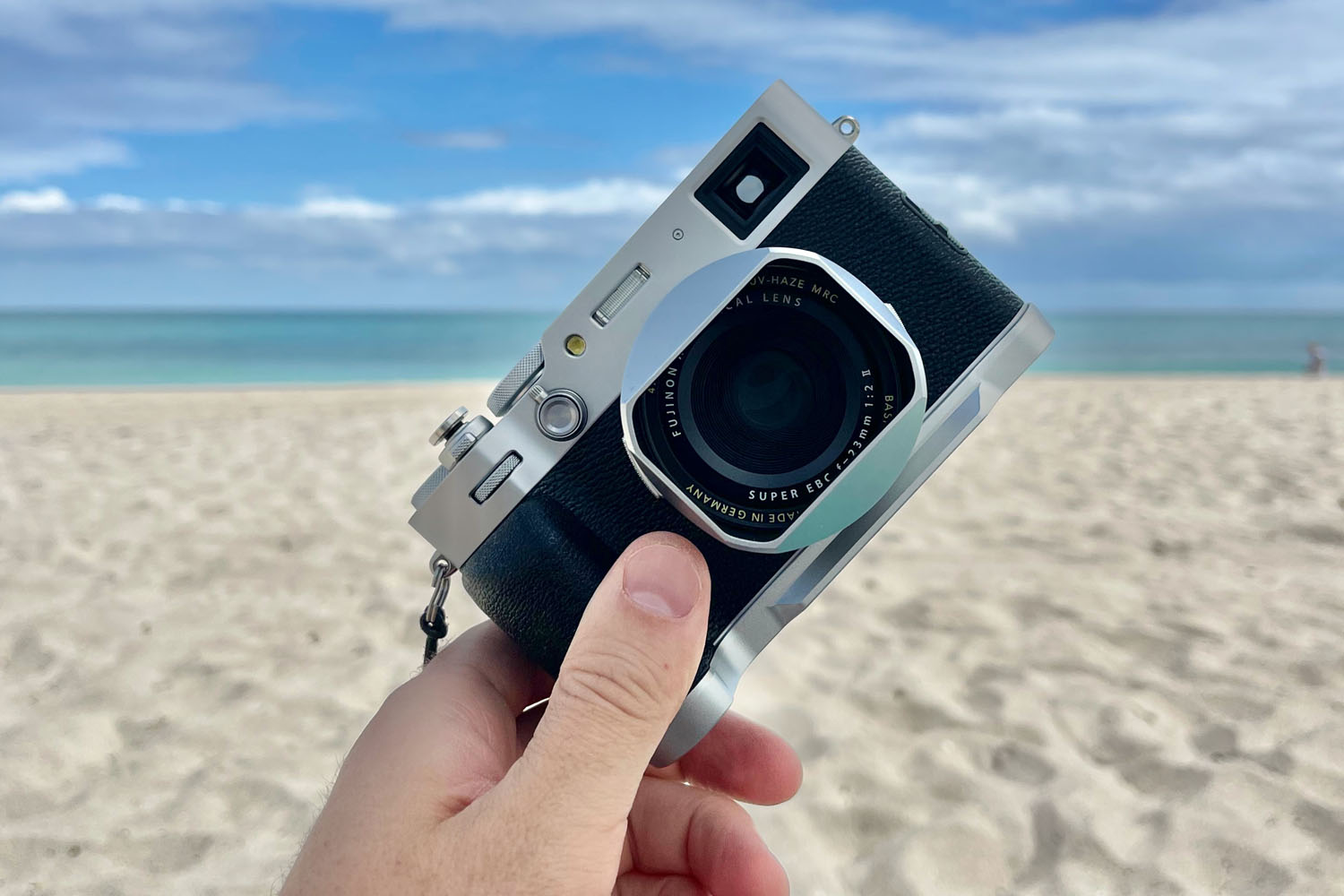

Sumanto Banerji
July 25, 2016 @ 10:17 pm
I enjoyed your tips – I’ve enjoyed taking candid photos at night ever since the days of shooting Delta 3200 with my Nikon FM2s!
One question: what metering mode do you use on your Fuji X cameras for these street scenes?
Sebastian Boatca
October 10, 2016 @ 11:18 am
Thank you for your comment! I use the Multi Mode because I trust the way Fujifilm does the metering on their camera. During the night, the scene is filled with both dark and light areas and I let the camera do the metering in the Multi Mode. Plus I underexpose the scene, to get the black zones, really black and maybe reduce the light from the bright zones, for a more realistic look.